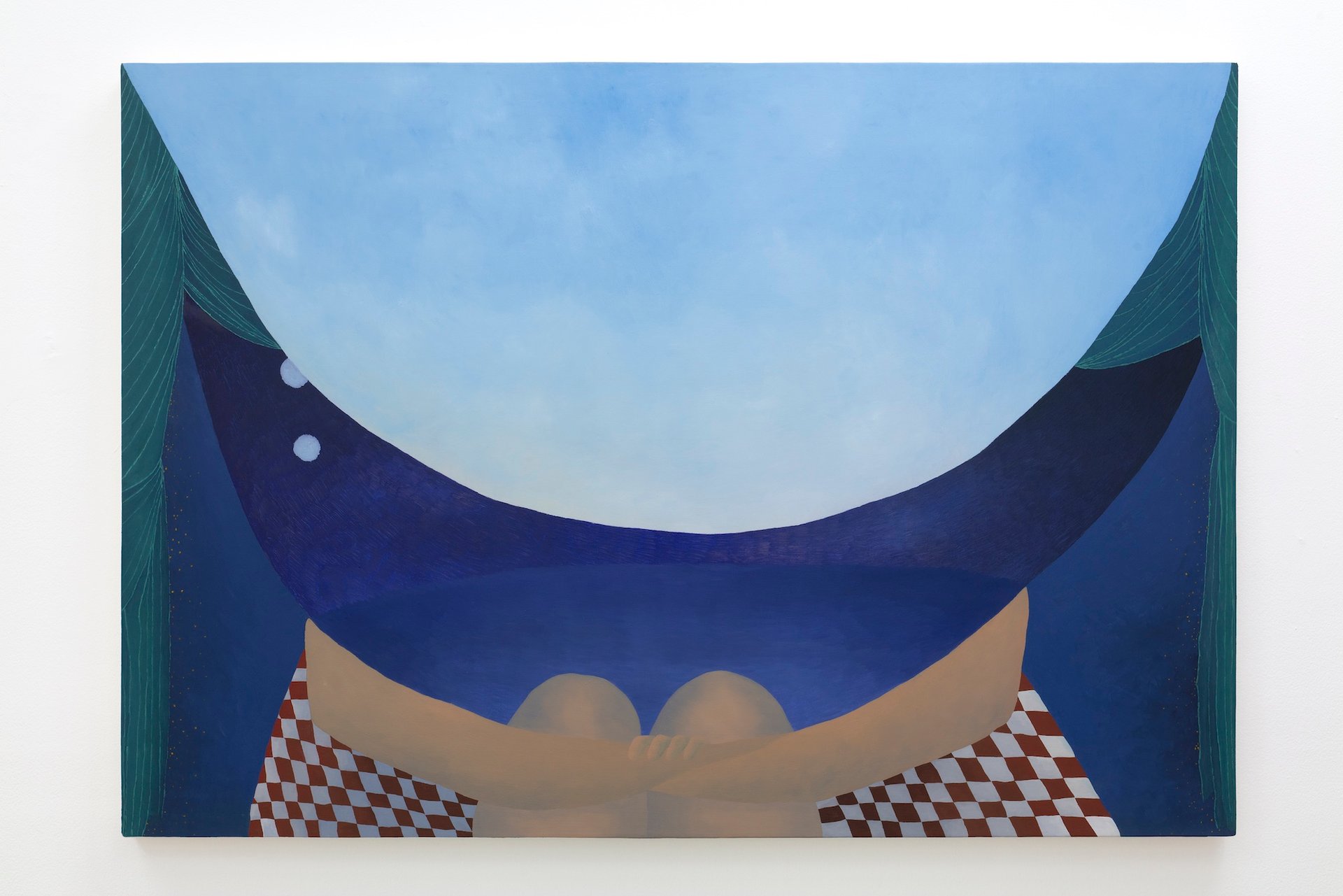For the fourth year in a row, Mexico’s art establishment descended on the city of Guadalajara at the tail end of September for five days of fairs, exhibitions, public programmes and tours of the city’s private collections and artist studios. After years of steadily increasing interest in the city’s art scene and design industries, 2025’s busy calendar consolidated Guadalajara Art Week as a viable alternative tentpole in Mexico’s national art calendar, where February’s overloaded Mexico City Art Week has left many gallerists wondering how to distribute their efforts more manageably.
“It’s very important to decentralise our programme and not concentrate only on Mexico City,” says Fátima González, the co-founder of Campeche gallery in Mexico City. Like most aspects of Mexico’s public life, the contemporary art scene is overwhelmingly concentrated in the capital and it has taken concerted effort to move the focus away from the centre.
Sebastián Hidalgo, Pallamar (De cristales metamórficos), 2025 Courtesy of the artist and Saenger Galería.
A key figure in those efforts is Brett Schultz, the director and co-founder of Material Fair, which four years ago launched Estación Material, a boutique art fair serving as the week’s main event in Guadalajara. “The whole point was to create a space where national collectors and galleries could get together and spend some quality time in a fair context without all the noise that Mexico [City]’s Art Week has,” he says. (Guadalajara, with around 1.4 million people, is Mexico’s seventh-largest city.)
Standouts this year at Estación Material—where each gallery presents a single, Mexico-based artist in a curated installation, without structured stands—included Sebastián Hidalgo, showing with Saenger Galería, whose series Metaphorical Crystals uses ground marble, silicates and pigment to delicately etch beautifully shimmering single-hued panels. Galería Karen Huber showed works by Othiana Roffiel, whose ethereal canvases are reminiscent of New Mexico’s Transcendental Painting Group from the early 1940s.

Othiana Roffiel, Rehearsal of Becoming, 2023 Courtesy of the artist and Galería Karen Huber
Another of Mexico City’s art fairs, Salón Acme, also holds satellite programming in Guadalajara through its Estudio Acme programme. For this edition, the organisers decided to stage a performance art showcase titled Holodrop. Estudio Acme had received strong criticism last year for holding a commercial event at a local public museum, the Museo de Arte de Zapopan. “We want to contribute to the local scene”, says Ana Castella, the director of Salón Acme. “We must think beyond the market, and rather on community.”
Borrowing strongly in style from Salón Acme’s Mexico City edition was a new fair this year, Temporal, held in a dilapidated building in downtown Guadalajara. The event brought together some of the edgier gallery programmes in Mexico, including Adhesivo Contemporary—which showed colourful works by, among others, Mariana Garibay Raeke and Santiago Evans Canales—and Nixxxon, in whose presentation inflatable blooms by Laura Elena Garduño stole the show. The food, music and dramatic venue made Temporal the week’s hottest ticket.
One of the most striking aspects of this Guadalajara Art Week was the apparent abundance of such distinctive spaces for use as exhibition venues, including a 1940s garment factory building, a 19th-century cemetery and one of famed Mexican architect Luis Barragán’s earliest constructions, Casa Cristo. Such creative uses of space echoed the sense of experimentation and unconventionality that defines the local scene.
Installation view of Not A Gallery’s pop-up exhibition during Guadalajara Art Week, with works by Rubén Ortiz Torres (left) and Verónica Rodríguez-Vebosh (right) Courtesy Not A Gallery
“In Guadalajara, the most interesting things are happening on the periphery,” says Clarisa Navarro, whose platform Not A Gallery operates without a fixed space. For Art Week, Navarro staged a group show featuring works by artists including Rubén Ortiz Torres and the queer photographer Ana Quiñonez in a soon-to-be-revamped one-story building with peeling paint and blown-out window frames.
Seemingly a world away, the local powerhouse gallery Travesía Cuatro presented a sleek show of stylised tropical landscapes by the rising Brazilian painter Rayana Rayo, which by the end of the week was already nearly sold out. At Estación Material, however, most galleries reported modest sales to none in the fair’s early days, although many were hopeful offers would come in eventually.
Paintings by Rayana Rayo on view at Travesía Cuatro’s Guadalajara space Credit: Agustín Arce. Courtesy of the artist and Travesía Cuatro.
“There are very few galleries in Guadalajara for a city with this much artistic production,” says Raúl Rebolledo, the coordinator of exhibitions and special projects at the local space Palma Galería. “The link between collectors and artists is still missing.”
The general expectation among exhibitors at Estación Material had been that the fair’s robust public programme would help build those connections. As the fair came to a close on Sunday, it appeared more work still had to be done to foster those links.
Still, enthusiasm was high. Healthy sales at Editable, a new art book fair, had vendors and organisers there in a positive mood. Exhibitions at local museums were well-attended and most dealers noted the presence of two large international groups—a first for Guadalajara Art Week—from Denver, led by FloraJane DiRienzo, the executive director at the Biennial of the Americas, and Houston, led by Mari Carmen Ramírez, the curator of Latin American art at the Museum of Fine Arts, Houston. The programming had succeeded in attracting international visitors and showcasing the strength of local artists and galleries.
“It’s important for Guadalajara now to have its own week that is totally independent from Mexico City Art Week,” Schultz says, articulating a sentiment widely shared and echoed among organisers, artists, dealers and attendees across the city.
